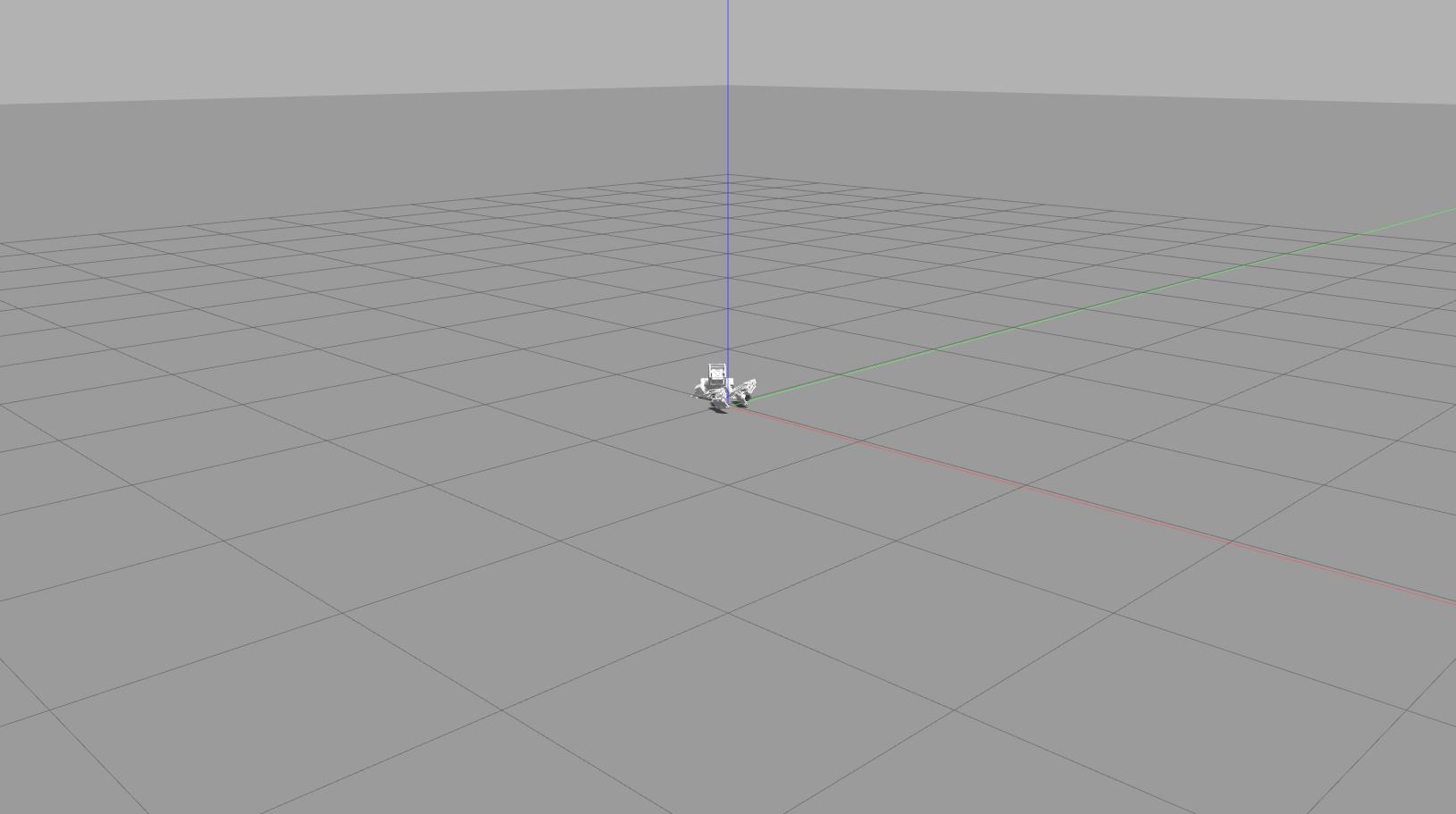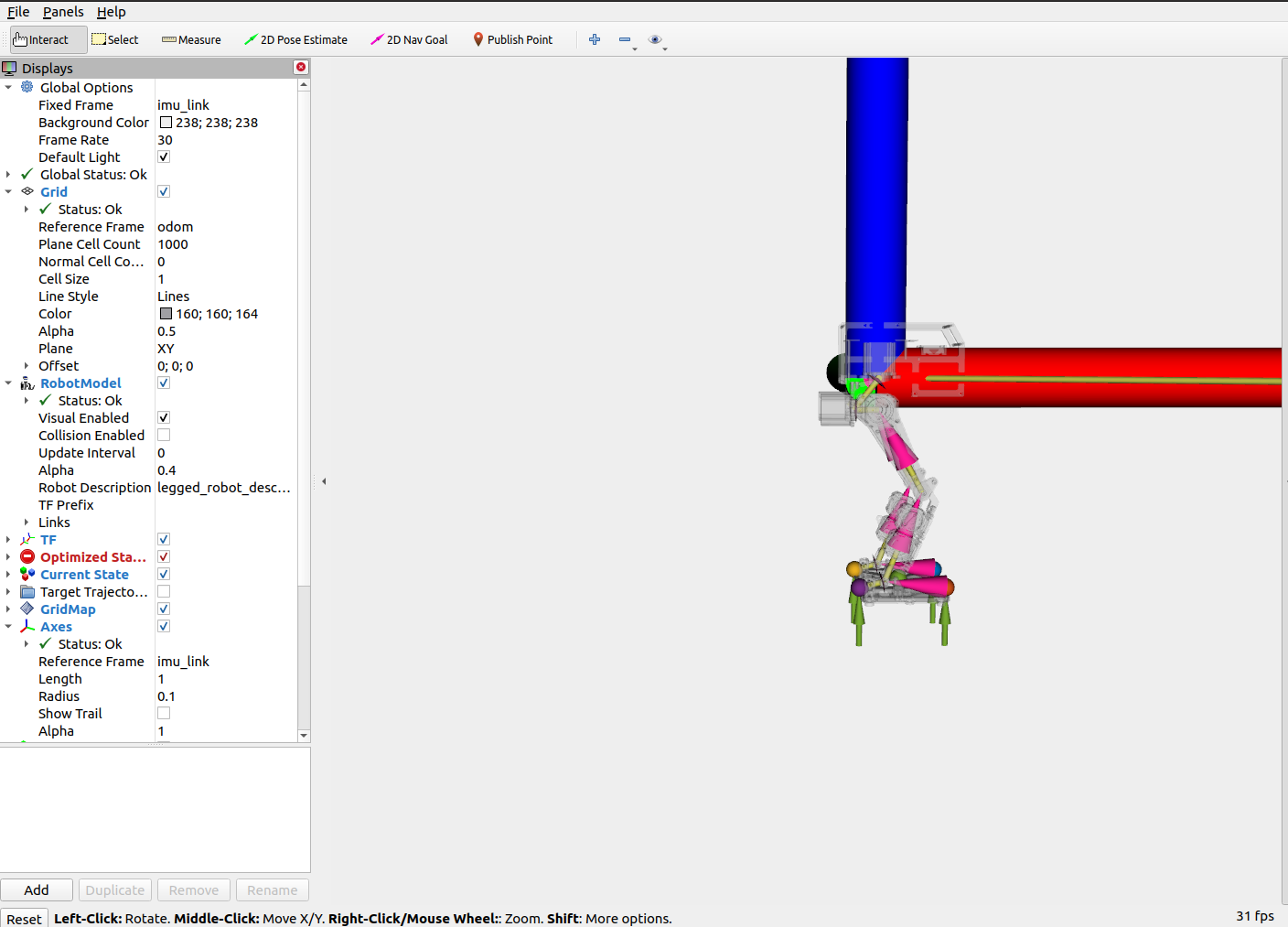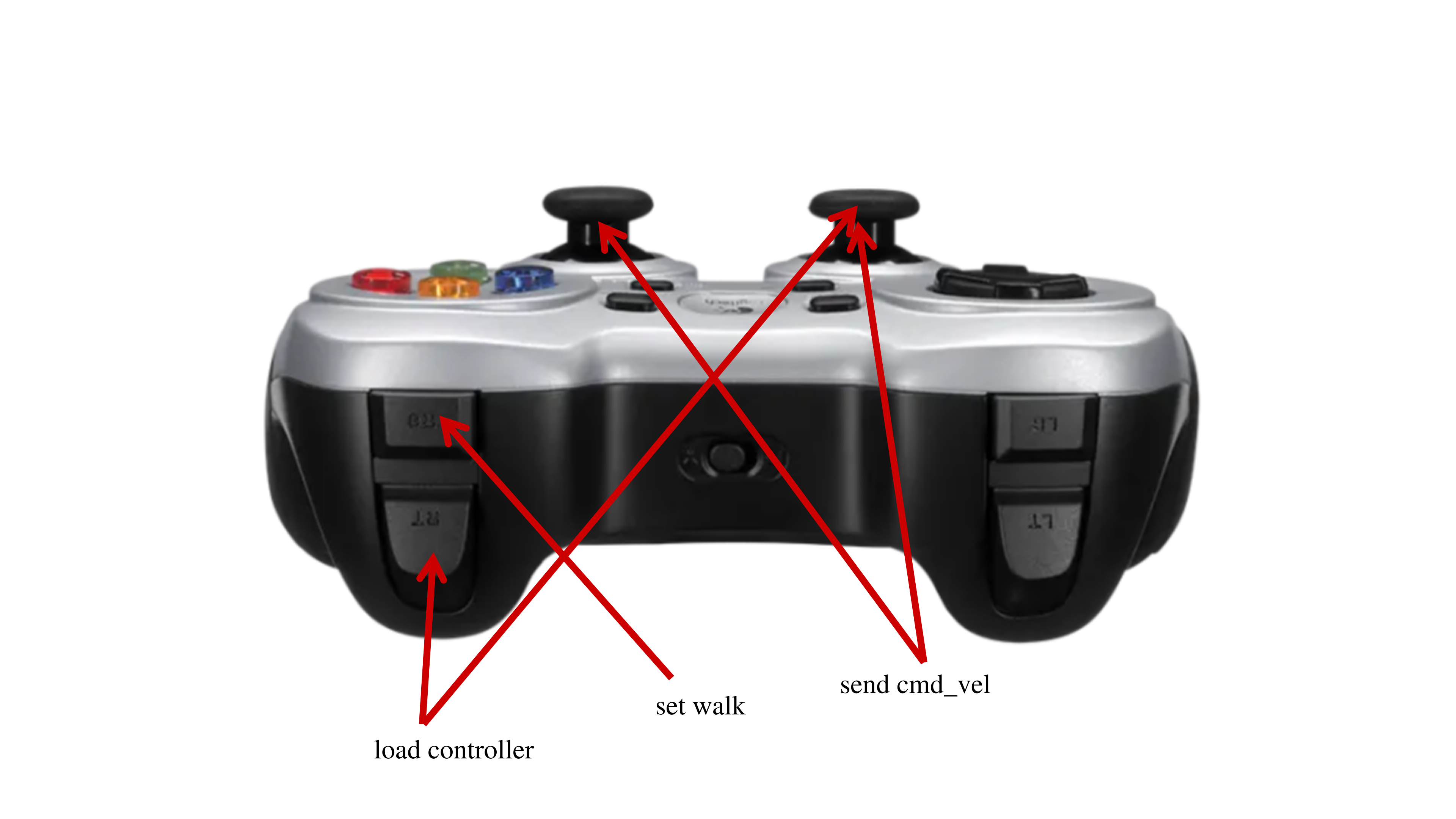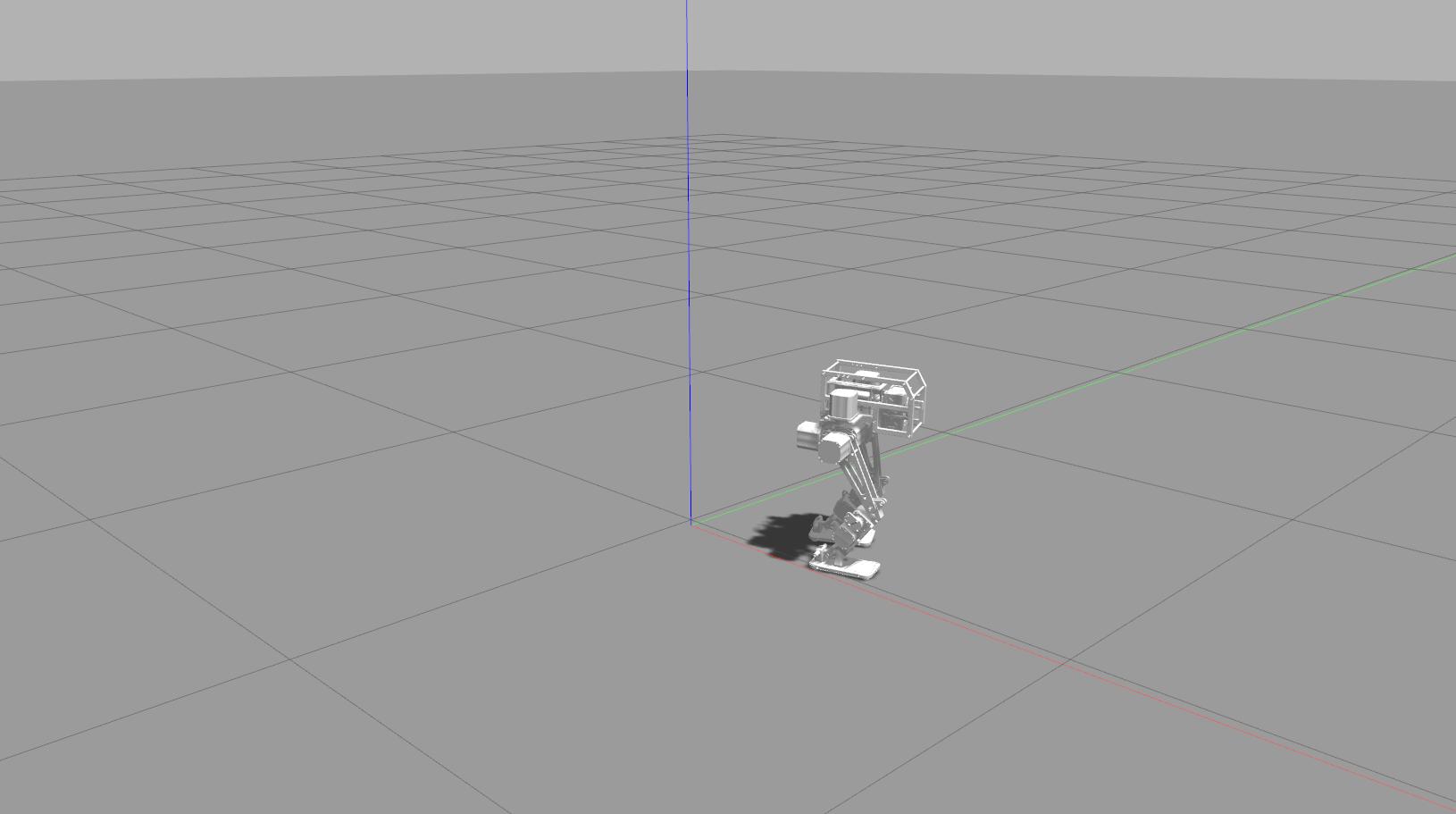An open source bipedal robot control framework, based on nonlinear MPC and WBC, adapted to high-end bipedal robots.Page
OCS2 is a huge monorepo; DO NOT try to compile the whole repo. You only need to compile ocs2_legged_robot_ros and
its dependencies following the step below.
-
You are supposed to clone the OCS2, pinocchio, and hpp-fcl as described in the documentation of OCS2.
# Clone OCS2 git clone https://github.com/leggedrobotics/ocs2.git # Clone pinocchio git clone --recurse-submodules https://github.com/leggedrobotics/pinocchio.git # Clone hpp-fcl git clone --recurse-submodules https://github.com/leggedrobotics/hpp-fcl.git # Clone ocs2_robotic_assets git clone https://github.com/leggedrobotics/ocs2_robotic_assets.git # Install dependencies sudo apt install liburdfdom-dev liboctomap-dev libassimp-dev
-
Compile the
ocs2_legged_robot_rospackage with catkin tools instead ofcatkin_make. It will take you about ten minutes.catkin config -DCMAKE_BUILD_TYPE=RelWithDebInfo catkin build ocs2_legged_robot_ros ocs2_self_collision_visualization
Ensure you can command the ANYmal as shown in the document and below.

# Clone
mkdir -p <catkin_ws_name>/src
cd <catkin_ws_name>/src
git clone git@github.com:HighTorque-Robotics/livelybot_dynamic_control.git
# Build
cd <catkin_ws_name>
catkin init
catkin config -DCMAKE_BUILD_TYPE=RelWithDebInfo
# for different use build
# gazebo simulation
catkin build legged_controllers legged_hunter_description legged_gazebo
# Robot hardware
catkin build legged_controllers legged_hunter_description legged_bridge_hwRun the gazebo simulation and load the controller:
roslaunch legged_controllers one_start_gazebo.launch load the controller
roslaunch legged_controllers one_start_real.launchNotes:
After the user starts the simulation, the robot falls down in Gazebo.
Gazebo
First the user needs to set kp_position=100, kd_position=1 in rqt (need refresh) and reset the simulation by pressing Ctrl+Shift+R to make the robot stand up.
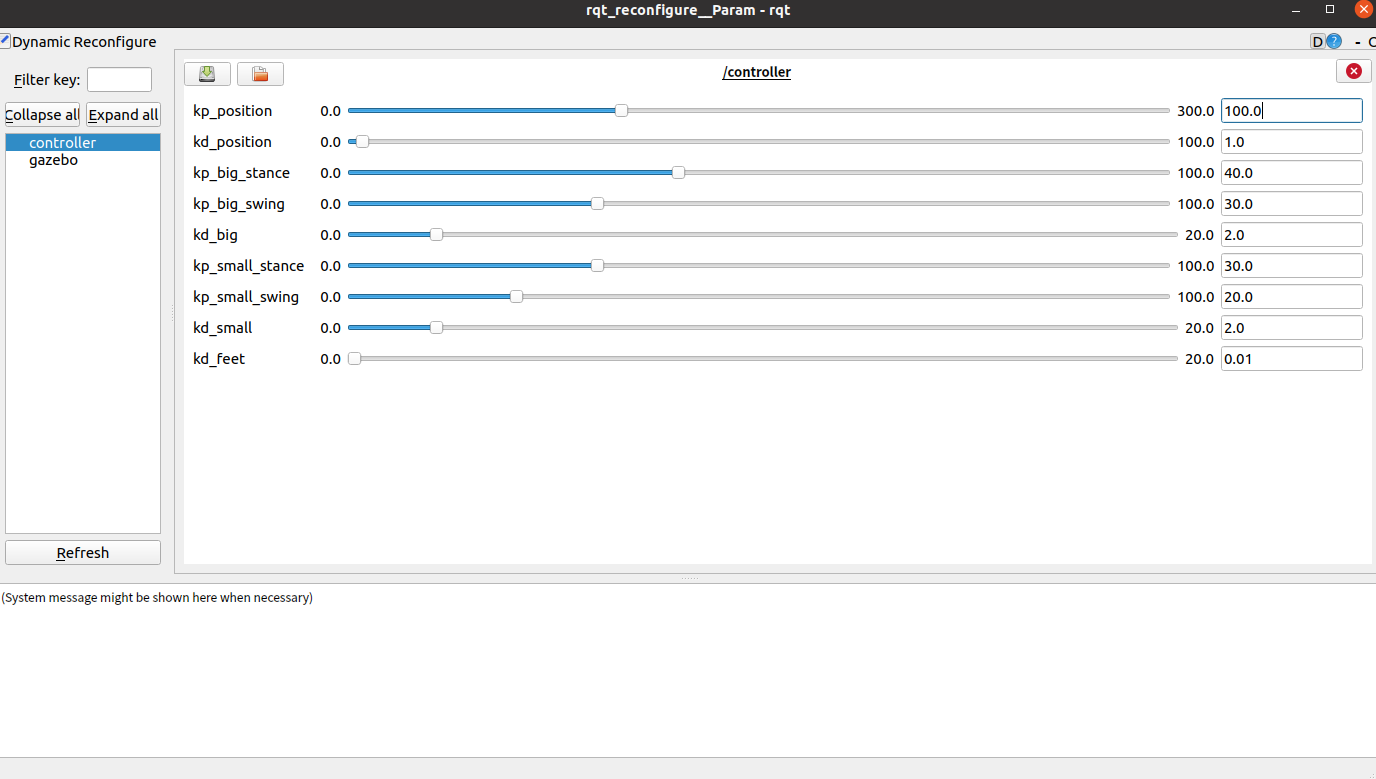
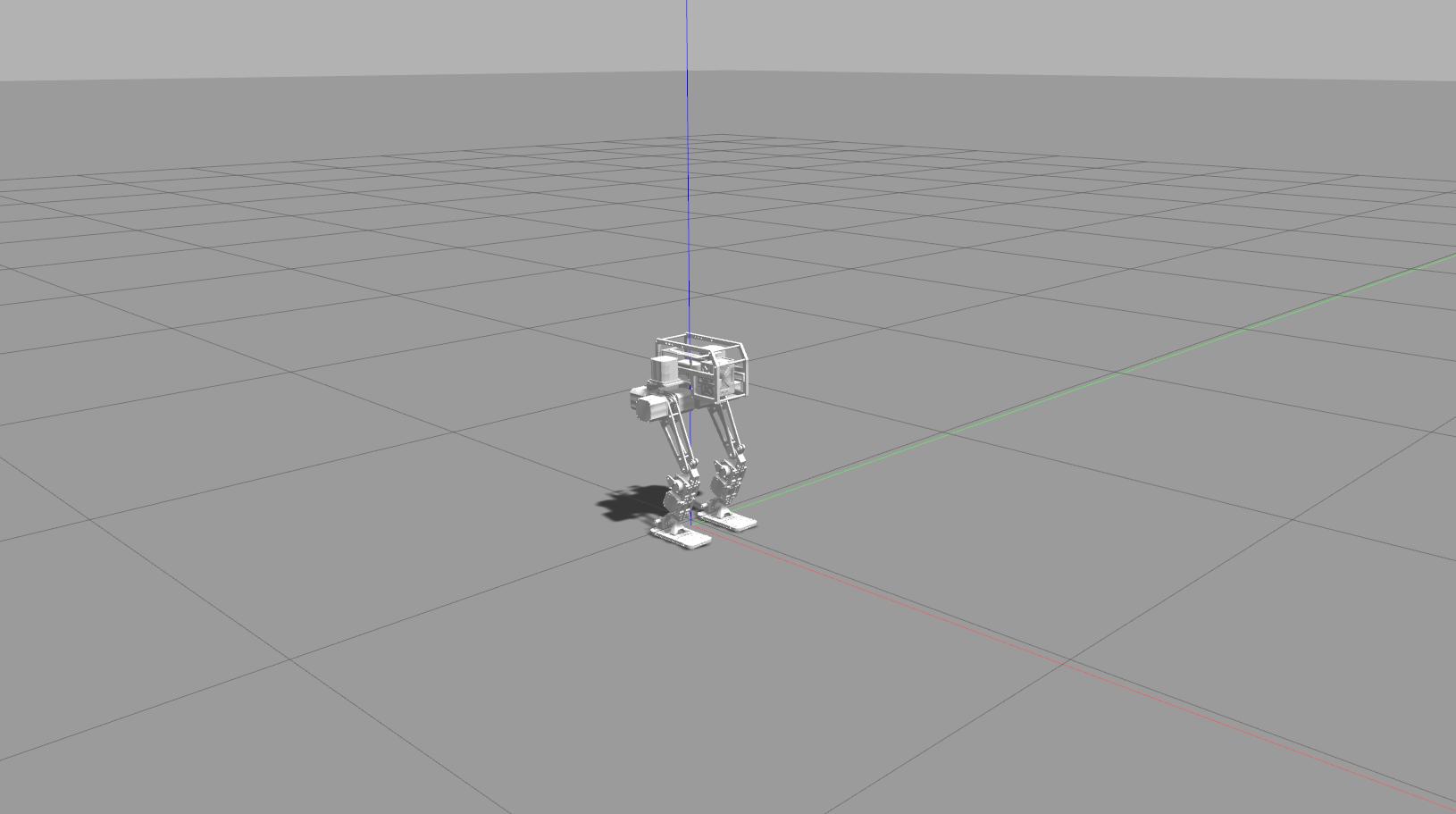
- Start controller
Press the left joystick once,than push RT
Terminal appears "Successfully load the controller"
- Switch to walking mode
push RB
- Use the joystick to control robot movement
The following is a schematic diagram of the handle operation:
Compilation: Only compile the following packages (and their dependencies), there's no need to compile the entire OCS2.
- Gazebo Simulation
catkin build legged_controllers legged_hunter_description legged_gazeboExecution: If you don't have a gamepad, you need to send the startup commands in order.
First, set kp_position=100 in rqt and reset the simulation by pressing Ctrl+Shift+R to make the robot stand up. Then, send the following commands:
rostopic pub --once /load_controller std_msgs/Float32 "data: 1.23"
rostopic pub --once /set_walk std_msgs/Float32 "data: 1.23"Before /load_controller, there needs to be a node continuously sending /cmd_vel (10Hz is normal), and it should continue sending during the simulation. Once /cmd_vel stops, the robot may fall.
As a example, here's a Python script that continuously sends /cmd_vel and allows keyboard control. You should start the script before /load_controller.
#!/root/miniconda3/envs/py39cu12/bin/python
import rospy
from geometry_msgs.msg import Twist
from pynput import keyboard
import threading
class KeyboardController:
def __init__(self):
self.publisher = rospy.Publisher('/cmd_vel', Twist, queue_size=1)
self.twist_msg = Twist()
self.rate = rospy.Rate(10)
def on_press(self, key):
try:
if key.char == 'q':
rospy.signal_shutdown("Quit")
else:
if key.char == 'w':
self.twist_msg.linear.x = 0.2
elif key.char == 's':
self.twist_msg.linear.x = -0.2
else:
self.twist_msg.linear.x = 0.0
if key.char == 'a':
self.twist_msg.angular.z = 0.2
elif key.char == 'd':
self.twist_msg.angular.z = -0.2
else:
self.twist_msg.angular.z = 0.0
except AttributeError:
pass
def on_release(self, key):
self.twist_msg.linear.x = 0.15
self.twist_msg.angular.z = 0.0
def ros_publish():
while not rospy.is_shutdown():
controller.publisher.publish(controller.twist_msg)
controller.rate.sleep()
if __name__ == '__main__':
rospy.init_node("keyboard_control")
controller = KeyboardController()
thread = threading.Thread(target=ros_publish)
thread.start()
listener = keyboard.Listener(on_press=controller.on_press, on_release=controller.on_release)
listener.start()
while not rospy.is_shutdown():
pass
listener.stop()
listener.join()
thread.join()https://bridgedp.github.io/hunter_bipedal_control
https://github.com/qiayuanl/legged_control
[1] Flayols T, Del Prete A, Wensing P, et al. Experimental evaluation of simple estimators for humanoid robots[C]//2017 IEEE-RAS 17th International Conference on Humanoid Robotics (Humanoids). IEEE, 2017: 889-895.
[2] Bloesch M, Hutter M, Hoepflinger M A, et al. State estimation for legged robots-consistent fusion of leg kinematics and IMU[J]. Robotics, 2013, 17: 17-24.
[3] Di Carlo J, Wensing P M, Katz B, et al. Dynamic locomotion in the mit cheetah 3 through convex model-predictive control[C]//2018 IEEE/RSJ international conference on intelligent robots and systems (IROS). IEEE, 2018: 1-9.
[4] Grandia R, Jenelten F, Yang S, et al. Perceptive Locomotion Through Nonlinear Model-Predictive Control[J]. IEEE Transactions on Robotics, 2023.
[5] Sleiman J P, Farshidian F, Minniti M V, et al. A unified mpc framework for whole-body dynamic locomotion and manipulation[J]. IEEE Robotics and Automation Letters, 2021, 6(3): 4688-4695.
[6] Bellicoso C D, Gehring C, Hwangbo J, et al. Perception-less terrain adaptation through whole body control and hierarchical optimization[C]//2016 IEEE-RAS 16th International Conference on Humanoid Robots (Humanoids). IEEE, 2016: 558-564.
[7] Kim D, Di Carlo J, Katz B, et al. Highly dynamic quadruped locomotion via whole-body impulse control and model predictive control[J]. arXiv preprint arXiv:1909.06586, 2019.
